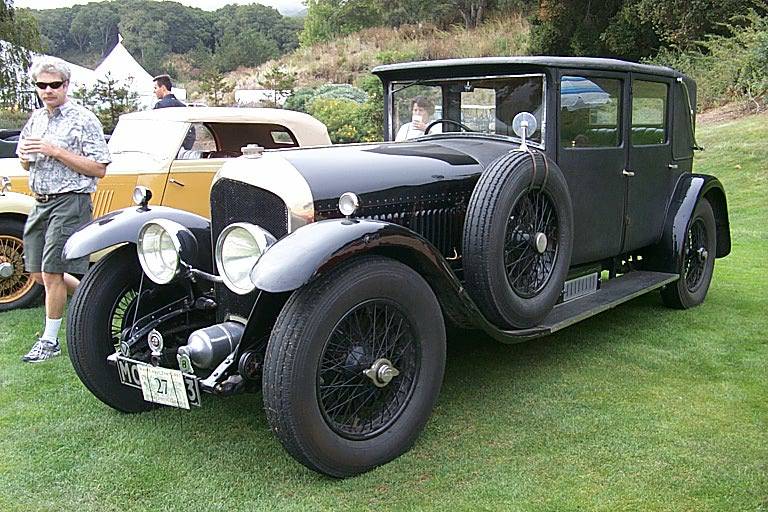
The Bentley 6½ Litre and the high-performance Bentley Speed Six were rolling chassis in production from 1926 to 1930. The Speed Six, introduced in 1928, would become the most successful racing Bentley. Two Bentley Speed Sixes became known as the Blue Train Bentleys after their owner Woolf Barnato's involvement in the Blue Train Races of 1930.
By 1924 Bentley had been in business for five years. He decided to build a larger chassis than the 3 Litre, with a smoother, more powerful engine. The new chassis would be more suitable for the large, heavy limousine bodies that many of his customers were then putting on his sports car chassis. The resulting car would be more refined and better suited for comfortable general motoring.
Realizing from the impromptu race that the Sun had no performance advantage over Rolls-Royce's latest development, W. O. increased the bore of his six-cylinder engine from 80 millimetres (3.1 in) to 100 millimetres (3.9 in). With a 140 mm (5.5 in) stroke, the engine had a displacement of 6.6 L (6,597 cc (402.6 cu in) Like the four-cylinder engine, Bentley's straight-6 included overhead camshaft, 4 valves per cylinder, and a single-piece engine block and cylinder head cast in iron, which eliminated the need for a head gasket. In base form, with a single Smiths 5-jet carburettor, twin ignition magnetos, and a compression ratio of 4.4:1, the Bentley 6½ Litre delivered 147 horsepower (110 kW) at 3500 RPM.
Although based on the 3 Litre's engine, the 6½ engine incorporated many improvements. The 3 Litre's cone-type clutch was replaced by a dry-plate design that incorporated a clutch brake for fast gear changes, and the car had power-assisted four-wheel brakes with finned drums. The front brakes had 4 leading shoes per drum. By operating a patented compensating device, the driver could adjust all four brakes to correct for wear while the car was moving, which was particularly advantageous during races.
A variety of wheelbases were provided ranging from 132 to 152.5 in (3,353 to 3,874 mm), the most popular being 150 inches.



































































